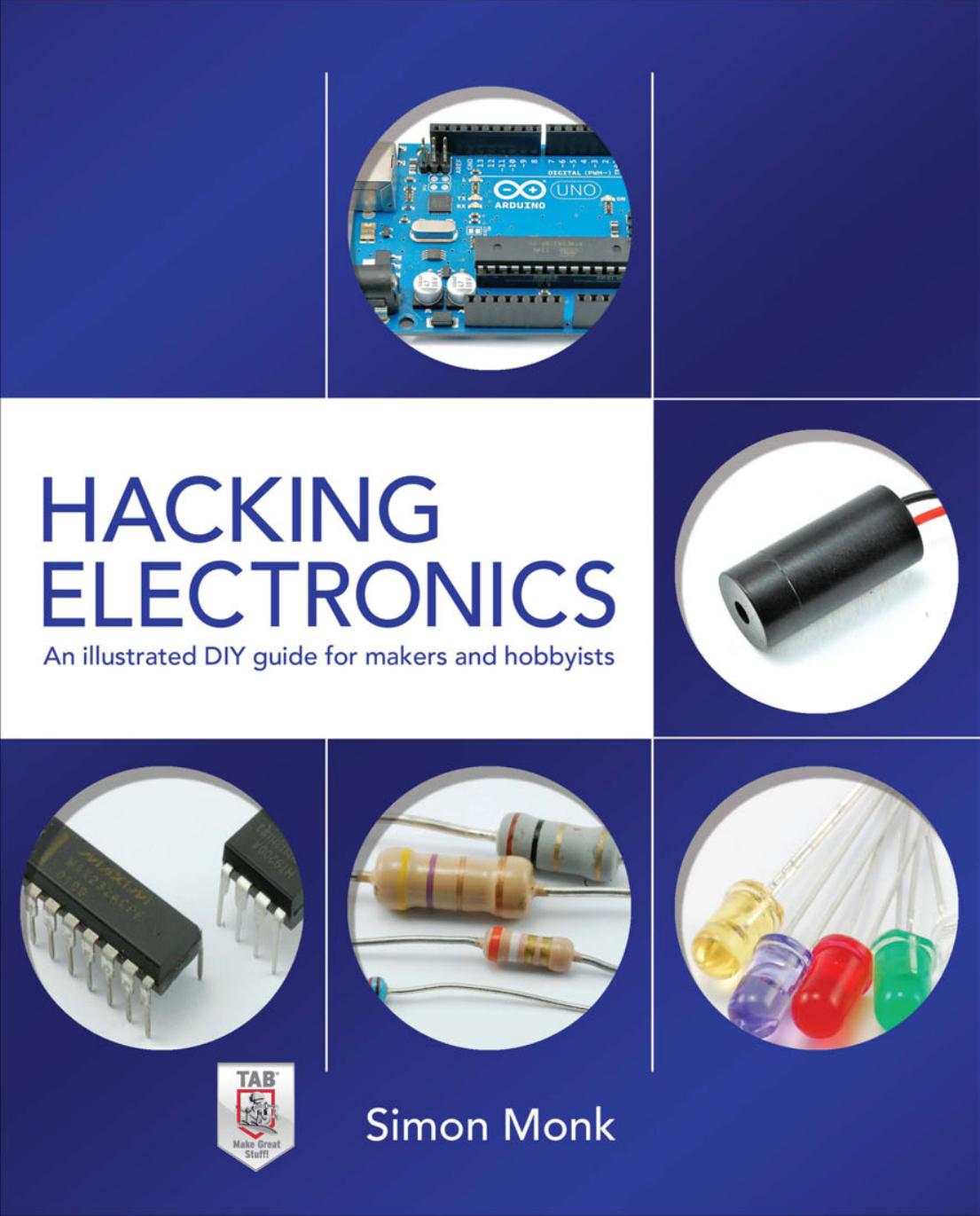Hacking Electronics: An Illustrated DIY Guide for Makers and Hobbyists by Simon Monk

Author:Simon Monk [Simon Monk]
Language: eng
Format: epub, pdf
Tags: DIY & Hardware, Engineering
Publisher: McGraw-Hill Education TAB
Published: 2013-03-22T04:00:00+00:00
Arduino Outputs
Arduino outputs, and for that matter inputs, are referred to as “pins,” even though if you look at the connectors along the sides of the Arduino, they are most definitely sockets rather than pins. The name harkens back to the pins on the microcontroller IC at the heart of the Arduino that were connected to the sockets.
Each of these “pins” can be configured to act as either an input or an output. When they are acting as an output, each pin can provide up to 40mA. This is more than enough to light an LED, but not enough to energize a relay coil, which typically requires more like 100mA.
This is a problem we have already discussed. Since we want to use a small current to control a larger one, a good way to do this is by using a transistor.
Figure 6-8 shows a schematic diagram of what we are going to build.
Download
Hacking Electronics: An Illustrated DIY Guide for Makers and Hobbyists by Simon Monk.pdf
This site does not store any files on its server. We only index and link to content provided by other sites. Please contact the content providers to delete copyright contents if any and email us, we'll remove relevant links or contents immediately.
| Circuits | Digital Design |
| Electric Machinery & Motors | Electronics |
| Fiber Optics | Networks |
| Superconductivity |
Whiskies Galore by Ian Buxton(41938)
Introduction to Aircraft Design (Cambridge Aerospace Series) by John P. Fielding(33092)
Small Unmanned Fixed-wing Aircraft Design by Andrew J. Keane Andras Sobester James P. Scanlan & András Sóbester & James P. Scanlan(32764)
Craft Beer for the Homebrewer by Michael Agnew(18197)
Turbulence by E. J. Noyes(7978)
The Complete Stick Figure Physics Tutorials by Allen Sarah(7338)
Kaplan MCAT General Chemistry Review by Kaplan(6900)
The Thirst by Nesbo Jo(6879)
Bad Blood by John Carreyrou(6583)
Modelling of Convective Heat and Mass Transfer in Rotating Flows by Igor V. Shevchuk(6406)
Learning SQL by Alan Beaulieu(6237)
Weapons of Math Destruction by Cathy O'Neil(6215)
Man-made Catastrophes and Risk Information Concealment by Dmitry Chernov & Didier Sornette(5956)
Digital Minimalism by Cal Newport;(5704)
Life 3.0: Being Human in the Age of Artificial Intelligence by Tegmark Max(5516)
iGen by Jean M. Twenge(5385)
Secrets of Antigravity Propulsion: Tesla, UFOs, and Classified Aerospace Technology by Ph.D. Paul A. Laviolette(5333)
Design of Trajectory Optimization Approach for Space Maneuver Vehicle Skip Entry Problems by Runqi Chai & Al Savvaris & Antonios Tsourdos & Senchun Chai(5037)
Pale Blue Dot by Carl Sagan(4954)
